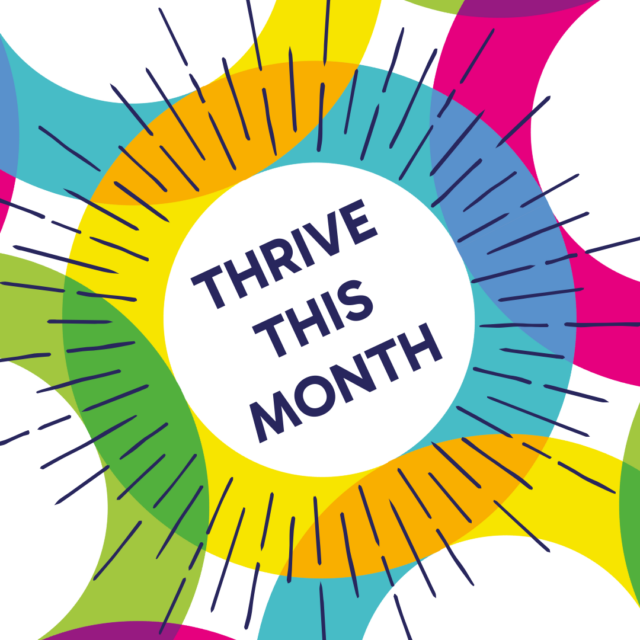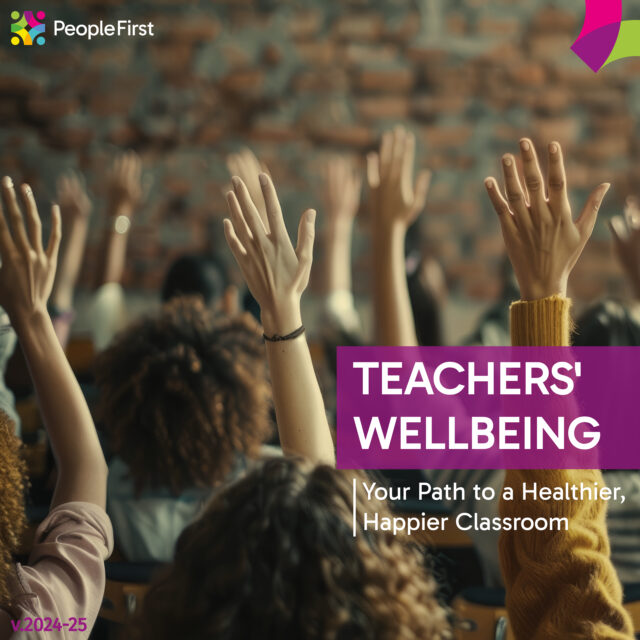
03 July 2024
Bridging the Wellbeing Knowledge-Action Gap
Our fourth webinar in the strategic wellbeing series in association with Smart Clinic looked at bridging the wellbeing knowledge-action gap. If you missed it, the recording can be found here. However, a summary of the webinar is below.
During the webinar we delved into a critical issue that affects us all: the wellbeing knowledge-action gap. This gap represents the discrepancy between knowing what promotes our wellbeing and actually engaging in those activities. Understanding this gap can help us take meaningful steps toward better health and happiness.
Knowing what’s good for us often doesn’t translate into action.
Understanding the Knowledge-Action Gap
The wellbeing knowledge-action gap is the difference between understanding what we need to do to maintain our wellbeing and actually doing those things. For example, we all know that regular exercise, a balanced diet, and adequate sleep are essential for our health. Despite this knowledge, many of us struggle to incorporate these practices into our daily lives. We might skip the gym after a long day at work, opt for fast food because it’s convenient, or sacrifice sleep to meet deadlines. This gap between knowledge and action is what we’re here to address today.
The Psychology Behind the Gap
To understand why this gap exists, we need to delve into the psychology behind our actions. One key concept is cognitive dissonance, which refers to the mental discomfort we experience when our actions don’t align with our beliefs or knowledge. For instance, if we believe that exercise is crucial for our health but consistently choose to avoid it, we experience cognitive dissonance. This discomfort can lead to stress and anxiety, making it even harder to change our behaviour.
Another psychological factor is the role of habits. Habits are behaviours that have become automatic through repetition. They are deeply ingrained in our daily routines, making them difficult to change. Breaking unhealthy habits and forming new, healthy ones requires significant effort and persistence. It involves not just understanding what needs to be done but also creating new routines and sticking to them until they become second nature.
There’s also the concept of immediate gratification versus delayed benefits, also known as temporal discounting. Our brains are wired to seek pleasure and avoid pain, often prioritising short-term comfort over long-term wellbeing. This is why we might choose to relax on the sofa instead of going for a run or indulge in a sugary snack instead of a healthy meal. The immediate pleasure we get from these choices can easily outweigh the delayed benefits of healthier actions, leading to a persistent knowledge-action gap.
In today’s digital age, there’s an abundance of conflicting health information, making it challenging for individuals to discern what actions are truly beneficial. This overload can contribute to decision paralysis or misinformation. Access to supportive environments, resources, education, and community support can greatly influence an individual’s ability to bridge the gap.
Physiology of Prioritising Work Over Wellbeing
In addition to psychological factors, physiological responses play a significant role in the knowledge-action gap, particularly when it comes to prioritising work over personal health. Stress responses are a prime example. When we face work-related stress, our bodies release hormones like adrenaline and cortisol. These hormones prepare us for a “fight or flight” response, increasing our alertness and energy levels temporarily. While this response is useful in short bursts, chronic stress can become addictive. The continuous release of stress hormones can create a cycle where we prioritise work to maintain this heightened state of alertness, often at the expense of our health.
Workplace culture can also reinforce this behaviour. In many organisations, there’s an unspoken expectation to prioritise work above all else. Long hours, tight deadlines, and the pressure to perform can make it difficult to find time for self-care. This culture of overwork can lead to burnout, where employees are physically and emotionally exhausted, further widening the knowledge-action gap.
Take a moment of self-reflection: Rate your knowledge of wellbeing and self-care strategies out of 10. If you are honest with yourself, how would you rate how effectively you have implemented them into your life to support your wellbeing?
Barriers to Bridging the Gap
Understanding the wellbeing knowledge-action gap involves identifying key barriers that prevent individuals from translating knowledge into action. Here are five common barriers:
Barrier 1: Lack of Time
One of the most common barriers individuals face is the perpetual struggle with time. In our fast-paced lives, where work commitments, family responsibilities, and personal pursuits compete for our attention, finding time for self-care can seem like an impossible feat. Ensuring your employees are equipped with time management strategies is key to supporting this barrier.
Barrier 2: Environmental and Social Influences
The environments we inhabit and the social circles we engage in can significantly shape our behaviours. Workplace cultures that prioritise productivity over breaks or social norms that encourage unhealthy eating habits can create formidable barriers to maintaining a healthy lifestyle.
Barrier 3: Lack of Immediate Rewards
Many wellbeing activities offer long-term benefits that are not immediately tangible. The delayed gratification associated with exercise, for example, contrasts sharply with the instant comfort of lounging on the sofa after a long day. Without tangible rewards or reinforcement, individuals may struggle to maintain consistency in their wellbeing efforts.
Barrier 4: Psychological Factors
Our mental state plays a crucial role in our ability to initiate and sustain wellbeing behaviours. Stress, anxiety, and mental health issues can severely impact our motivation and energy levels, making it difficult to prioritise self-care activities. Overcoming these psychological hurdles often requires targeted interventions and support systems that address mental wellbeing alongside physical health.
Barrier 5: Habit Formation
Habits, both good and bad, exert a powerful influence on our daily lives. Forming new habits or breaking old ones requires concerted effort and persistence. Understanding the mechanics of habit formation, including the cues, routines, and rewards that comprise habit loops, is essential for initiating sustainable behaviour change.
Strategies for Bridging the Gap
To effectively bridge the wellbeing knowledge-action gap within your organisation, a strategic and supportive approach is essential. Companies and organisations play a pivotal role in creating environments that facilitate and encourage healthy behaviours among their employees. Here are five key tips you could implement to bridge this gap:
1. Promote Time Management for Wellbeing
Encourage employees to prioritise self-care by integrating wellbeing activities into their daily routines. Provide flexible work arrangements or designated break times that allow employees to engage in physical activity, mindfulness practices, or simply take short breaks to recharge.
2. Create Supportive Environments
Advocate for and implement workplace policies that promote wellbeing. This can include initiatives such as wellbeing induction programmes, ergonomic workspaces, healthy food options, and access to mental health resources. Foster a culture where taking care of one’s health is not only encouraged but also supported by leadership and management.
3. Set Realistic Wellbeing Goals
Facilitate goal-setting exercises that focus on achievable milestones related to wellbeing. Encourage leaders and managers to discuss wellbeing goals during performance reviews and provide opportunities for employees to track their progress. Celebrate and recognise achievements, no matter how small, to reinforce positive behaviours and motivate continued effort.
4. Build Resilience Through Support
Offer resources and training programmes that help employees develop resilience and coping strategies for managing stress effectively. This can include workshops on mindfulness, stress management techniques, and access to work and wellbeing coaching. Empower managers to recognise signs of burnout and create a supportive environment where employees feel comfortable seeking help when needed.
5. Encourage Consistency and Patience
Acknowledge that sustainable behaviour change takes time and effort. Provide ongoing support and encouragement for employees as they navigate their wellbeing journeys. Implement regular check-ins or wellness assessments to monitor progress and adjust strategies as necessary.
Conclusion
By proactively addressing these barriers at the organisational level, companies can foster a culture of wellbeing that empowers employees to bridge the gap between knowing and doing. Small changes in organisational policies and practices can lead to significant improvements in employee health, happiness, and productivity over time. Investing in employee wellbeing not only benefits individuals but also contributes to a more resilient and thriving workplace environment as a whole.

- Defining the Knowledge-Action Gap – The wellbeing knowledge-action gap is the discrepancy between knowing what promotes our wellbeing and actually engaging in those activities, influenced by cognitive dissonance, habits, and the preference for immediate gratification.
- Psychological and Physiological Factors – Cognitive dissonance, ingrained habits, and workplace stress responses are significant factors that prevent individuals from translating wellbeing knowledge into action.
- Key Barriers Identified – Common barriers include lack of time, environmental and social influences, lack of immediate rewards, psychological factors, and the challenge of habit formation.
- Strategies to Bridge the Gap – Organisations can bridge the gap by promoting time management for wellbeing, creating supportive environments, setting realistic goals, building resilience through support, and encouraging consistency and patience.
- Organisational Role in Wellbeing – Companies play a crucial role in fostering a culture of wellbeing by implementing strategic policies and practices that facilitate healthy behaviours, leading to improved employee health, happiness, and productivity.
What’s Next?
Our next webinar on Wednesday 11th September will explore 5 steps to building psychological safety in the workplace. To ensure you can access the webinars, please register (Register) or sign up for our newsletter to get the latest insights and information directly to your inbox.
Missed our previous strategic wellbeing webinars?
Don’t worry you can read the highlights or catch up with the recordings.
| Theme | Recording | Blog Article |
| Employees’ wellbeing skills – 5 assumptions | 1st webinar | Wellbeing assumptions |
| Unveiling Golden Tips for Maximum Impact | 2nd webinar | Golden Tips |
| 5 Steps to building a strategy | 3rd webinar | Building a strategy |
Thank you for your commitment to fostering a healthier, happier workplace.





